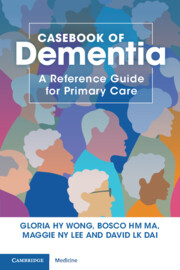622 results
Domination inequalities and dominating graphs
- Part of
-
- Journal:
- Mathematical Proceedings of the Cambridge Philosophical Society , First View
- Published online by Cambridge University Press:
- 19 September 2024, pp. 1-18
-
- Article
- Export citation
Are Opioid Receptor Antagonists Effective at Treating Antipsychotic-Induced Weight Gain? A Systematic Review and Meta-Analysis
-
- Journal:
- BJPsych Open / Volume 10 / Issue S1 / June 2024
- Published online by Cambridge University Press:
- 01 August 2024, pp. S89-S90
-
- Article
-
- You have access
- Open access
- Export citation
Measurement That Matches Theory: Theory-Driven Identification in Item Response Theory Models
-
- Journal:
- American Political Science Review , First View
- Published online by Cambridge University Press:
- 31 July 2024, pp. 1-19
-
- Article
-
- You have access
- Open access
- HTML
- Export citation
Copyright page
-
- Book:
- Casebook of Dementia
- Published online:
- 23 May 2024
- Print publication:
- 30 May 2024, pp iv-iv
-
- Chapter
-
- You have access
- Open access
- HTML
- Export citation
Preface
-
- Book:
- Casebook of Dementia
- Published online:
- 23 May 2024
- Print publication:
- 30 May 2024, pp xi-xii
-
- Chapter
-
- You have access
- Open access
- HTML
- Export citation
Chapter 4 - Useful Tools and Resources in Early Intervention Services
-
- Book:
- Casebook of Dementia
- Published online:
- 23 May 2024
- Print publication:
- 30 May 2024, pp 209-224
-
- Chapter
-
- You have access
- Open access
- HTML
- Export citation
Reviews
-
- Book:
- Casebook of Dementia
- Published online:
- 23 May 2024
- Print publication:
- 30 May 2024, pp ii-ii
-
- Chapter
-
- You have access
- Open access
- HTML
- Export citation
Glossary
-
- Book:
- Casebook of Dementia
- Published online:
- 23 May 2024
- Print publication:
- 30 May 2024, pp 248-249
-
- Chapter
-
- You have access
- Open access
- HTML
- Export citation
Chapter 3 - Atypical Alzheimer’s Disease, Other Dementias, and Differential Diagnoses
-
- Book:
- Casebook of Dementia
- Published online:
- 23 May 2024
- Print publication:
- 30 May 2024, pp 176-208
-
- Chapter
-
- You have access
- Open access
- HTML
- Export citation
Foreword
-
- Book:
- Casebook of Dementia
- Published online:
- 23 May 2024
- Print publication:
- 30 May 2024, pp viii-x
-
- Chapter
-
- You have access
- Open access
- HTML
- Export citation
Chapter 2 - Typical Alzheimer’s Disease
-
- Book:
- Casebook of Dementia
- Published online:
- 23 May 2024
- Print publication:
- 30 May 2024, pp 22-175
-
- Chapter
-
- You have access
- Open access
- HTML
- Export citation
Contents
-
- Book:
- Casebook of Dementia
- Published online:
- 23 May 2024
- Print publication:
- 30 May 2024, pp v-vii
-
- Chapter
-
- You have access
- Open access
- HTML
- Export citation
Index
-
- Book:
- Casebook of Dementia
- Published online:
- 23 May 2024
- Print publication:
- 30 May 2024, pp 250-256
-
- Chapter
-
- You have access
- Open access
- HTML
- Export citation
Chapter 1 - Background
-
- Book:
- Casebook of Dementia
- Published online:
- 23 May 2024
- Print publication:
- 30 May 2024, pp 1-21
-
- Chapter
-
- You have access
- Open access
- HTML
- Export citation
Chapter 5 - Take-Home Messages and Further Readings
-
- Book:
- Casebook of Dementia
- Published online:
- 23 May 2024
- Print publication:
- 30 May 2024, pp 225-247
-
- Chapter
-
- You have access
- Open access
- HTML
- Export citation

Casebook of Dementia
- A Reference Guide for Primary Care
-
- Published online:
- 23 May 2024
- Print publication:
- 30 May 2024
-
- Book
-
- You have access
- Open access
- Export citation
7 - Australia and Europe
-
-
- Book:
- Australia in World Affairs 2006–2010
- Published online:
- 04 May 2024, pp 96-111
-
- Chapter
- Export citation
Acceptability of virtual psychiatric consultations for routine follow-ups post COVID-19 pandemic for people with intellectual disabilities: cross-sectional study
-
- Journal:
- BJPsych Open / Volume 10 / Issue 3 / May 2024
- Published online by Cambridge University Press:
- 19 April 2024, e90
-
- Article
-
- You have access
- Open access
- HTML
- Export citation
Haplorchis infections in intermediate hosts from a clonorchiasis endemic area in Meinung, Taiwan, Republic of China
-
- Journal:
- Journal of Helminthology / Volume 76 / Issue 2 / June 2002
- Published online by Cambridge University Press:
- 15 April 2024, pp. 185-188
-
- Article
- Export citation
Adjunctive cariprazine for major depressive disorder: a systematic review and meta-analysis
-
- Journal:
- CNS Spectrums , First View
- Published online by Cambridge University Press:
- 01 April 2024, pp. 1-10
-
- Article
- Export citation

